
Kód: 01422900
Spatial Processing in Navigation, Imagery and Perception
Autor Fred W. Mast, Lutz Jäncke
The processing of spatial information is an increasingly important topic with new findings emerging from several disciplines especially within the last few years. These disciplines are cognitive neuroscience, cognitive psychology, ... celý popis
- Jazyk:
 Angličtina
Angličtina - Väzba: Brožovaná
- Počet strán: 442
Nakladateľ: Springer-Verlag New York Inc., 2010
- Viac informácií o knihe

212.10 €

Skladom u dodávateľa v malom množstve
Odosielame za 12 - 15 dní
Potrebujete viac kusov?Ak máte záujem o viac kusov, preverte, prosím, najprv dostupnosť titulu na našej zákazníckej podpore.
Pridať medzi želanie
Mohlo by sa vám tiež páčiť
-

Student's Guide to Writing Dissertations and Theses in Tourism Studies and Related Disciplines
276.06 € -

Vezmi ma na mesiac
8.19 € -23 % -

Poslední perla
3.73 € -5 % -

Praga Guía por el corazón mágico de Europa
16.79 € -15 % -

Erinnerungsorte des Christentums
20.23 € -

Schulform der Hauptschule - Hoffnungstrager oder Auslaufmodell?
45.43 € -

Catulli Carmina
10.21 € -2 %
Darujte túto knihu ešte dnes
- Objednajte knihu a vyberte Zaslať ako darček.
- Obratom obdržíte darovací poukaz na knihu, ktorý môžete ihneď odovzdať obdarovanému.
- Knihu zašleme na adresu obdarovaného, o nič sa nestaráte.
Viac informácií o knihe Spatial Processing in Navigation, Imagery and Perception
Nákupom získate 530 bodov
 Anotácia knihy
Anotácia knihy
The processing of spatial information is an increasingly important topic with new findings emerging from several disciplines especially within the last few years. These disciplines are cognitive neuroscience, cognitive psychology, sensorimotor integration, neuropsychology and neuroanatomy. The aim of this book is to bring together a group of internationally highly renowned researchers from these disciplines. The book serves as a state-of-the-art platform, on which the very latest developments in spatial processing are presented. It will be useful for clinicians, experimental scientists, and graduate students. With respect to the teaching aspect, the editor s judgment is based on long-term experience in teaching cognitive neuroscience, cognitive psychology, and neurophysiology.§The mechanisms that underlie the processing of spatial information are explored in human and animal research without much crosstalk across disciplines. The reader of the book will learn to see several connections across disciplines. For example, a contribution on mental imagery by Stephen Kosslyn, which is highly related to studies with neglect patients (Pizzamiglio) who are unable to appropriately imagine their environment. Several contributions will then tie in knowledge from basic neuroscience such as Berhoz contribution focusing on the hippocampus and its role in navigation. All contributions are strongly related to at least three other contributions.The processing of spatial information is an increasingly important topic, especially in recent few years, with new findings emerging from such diverse disciplines as cognitive neuroscience; cognitive psychology; sensorimotor integration; neuropsychology and neuroanatomy. Bringing together contributions from a group of internationally highly renowned researchers from across these disciplines, this book offers a state-of-the-art platform on which the latest developments in spatial processing are presented.Spatial Processing in Navigation, Imagery and Perception serves as a state-of-the-art platform, on which the very latest developments in spatial processing are presented. Spatial processing is centrally involved in almost any cognitive function and the neural underpinnings of spatial functions are much more complex than they have been conceived before. Studying spatial processing helps to explore how basic cognitive functions operate such as language, attention, perception, movement control and mental imagery. The processing of spatial information is distributed in complex cortical and sub-cortical structures and we are now in a position to better understand the underlying neuroanatomy and neurophysiology. This is made possible by the advent of novel techniques such as structural and functional in vivo anatomy, modeling, and sophisticated behavioral research tools. Modern neuroscientific techniques have been in many ways the catalyst of this research but there is also a revival of behavioral methods used in studies on spatial processing. It is in fact the fruitful combination of both the neuroscientific and behavioral approaches why this exciting field has progressed so far and is still progressing for many years to come.§Research on spatial processing is not only restricted to basic science but rather has important applied implications. It is tremendously important to know how the human brain is accomplishing spatial tasks in real life scenarios such as driving a car, orienting oneself in large scale cities, postural control or playing various sports like baseball, soccer or tennis. Moreover, knowing more about plasticity and training related influences on spatial functions will have a huge impact on how to efficiently insert new technologies in everyday life.§The findings presented in Spatial Processing in Navigation, Imagery and Perception emerge from different disciplines such as cognitive neuroscience, cognitive psychology, neuropsychology, neuroanatomy, computer science and robotics. The reader will learn to see several connections across these disciplines. Chapter authors are the most respected and internationally renowned researchers in the field. This book will be useful for experimental scientists, clinicians and graduate students.
 Parametre knihy
Parametre knihy
Zaradenie knihy Knihy po anglicky Mathematics & science Biology, life sciences Life sciences: general issues
212.10 €
- Celý názov: Spatial Processing in Navigation, Imagery and Perception
- Autor: Fred W. Mast, Lutz Jäncke
- Jazyk:
 Angličtina
Angličtina - Väzba: Brožovaná
- Počet strán: 442
- EAN: 9781441944221
- ISBN: 1441944222
- ID: 01422900
- Nakladateľ: Springer-Verlag New York Inc.
- Hmotnosť: 706 g
- Rozmery: 235 × 155 × 25 mm
- Dátum vydania: 12. February 2010
Obľúbené z iného súdka
-

The Molecule of More
18.10 € -14 % -

Evolution
28.53 € -8 % -

Power, Sex, Suicide
13.04 € -17 % -

Psychopath Inside
16.99 € -11 % -

Murderous Minds
16.18 € -6 % -

Science of Meditation
11.12 € -22 % -

Oxygen
12.13 € -23 % -

Equine Genomics
227.08 € -

Race Differences in Intelligence
35.41 € -

The Selfish Gene
11.53 € -19 % -

Undoing Project
11.02 € -14 % -

Biology of Belief
17.50 € -23 % -

Power of Habit
11.93 € -24 % -

Sapiens
21.55 € -
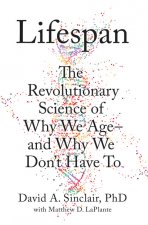
Lifespan
23.87 € -23 % -

The Extended Phenotype
12.74 € -19 % -

Into the Magic Shop
14.87 € -22 % -

Homo Deus
11.32 € -21 % -

Cosmic Serpent
10.41 € -27 % -

Greatest Show on Earth
11.43 € -20 % -

Speculations on the Evolution of Human Intelligence
9.81 € -4 % -

Blind Watchmaker
12.84 € -23 % -

We Are Our Brains
11.43 € -20 % -

River Out of Eden
11.02 € -23 % -
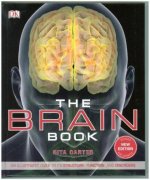
Brain Book
23.57 € -16 % -
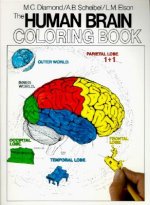
Human Brain Coloring Book
17.60 € -27 % -

Crack In Creation
17.50 € -4 % -

Schaum's Outline of Genetics, Fifth Edition
28.73 € -14 % -
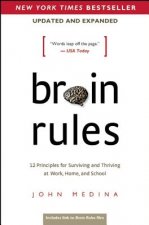
Brain Rules (Updated and Expanded)
16.38 € -3 % -

Hidden History of the Human Race
13.85 € -18 % -
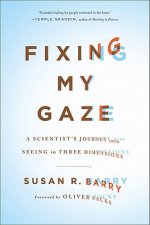
Fixing My Gaze
22.15 € -

Neanderthal Man
15.98 € -21 % -

Why We Run
16.79 € -12 % -

On Natural Selection
9.81 € -
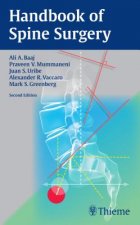
Handbook of Spine Surgery
116.17 € -

Cartoon Guide to Genetics
16.38 € -23 % -

Ecological Thought
33.08 € -

Creative Evolution
15.37 € -19 % -

Brief History of Everyone Who Ever Lived
10.82 € -24 % -

Social Conquest of Earth
16.89 € -12 % -

Consciousness
15.98 € -16 % -

Atlas of Human Brain Connections
142.48 € -

Double Helix
18.31 € -3 % -

Masters of the Planet
15.98 € -21 % -

Vital Dust
32.48 € -

What Mad Pursuit
29.03 € -

Zooarchaeology and Modern Human Origins
120.22 € -

Handbook of Schizophrenia Spectrum Disorders, Volume I
212.10 € -

Tree of Life
48.97 € -3 %
Osobný odber Bratislava a 2642 dalších
Copyright ©2008-24 najlacnejsie-knihy.sk Všetky práva vyhradenéSúkromieCookies


 21 miliónov titulov
21 miliónov titulov Vrátenie do mesiaca
Vrátenie do mesiaca 02/210 210 99 (8-15.30h)
02/210 210 99 (8-15.30h)